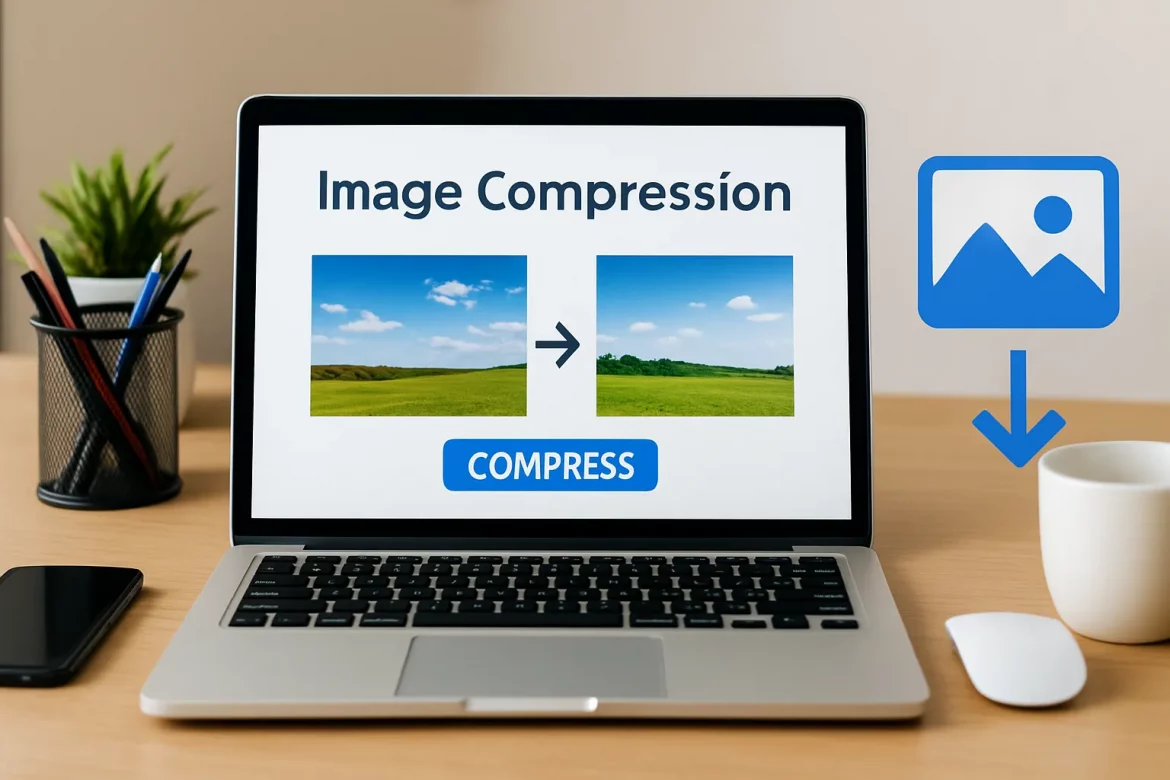Contents
Website speed can make or break user experience. Slow-loading pages frustrate visitors and increase bounce rates, reducing engagement. In today’s competitive digital environment, even a delay of one second can affect conversions and search engine rankings.
Images often account for the majority of a website’s total page size. Large, unoptimized files can slow load times dramatically, especially on mobile networks. Optimizing images is therefore essential for delivering a fast and smooth browsing experience.
Image compression reduces file sizes without noticeable loss of quality. This process ensures websites load faster, saves bandwidth, and improves both SEO and user satisfaction. For quick optimization, free online tools provide a practical solution, allowing users to compress images instantly without installing software.
Why Image Compression is Critical for Website Speed
Images can contribute to over 60% of a webpage’s size. When left unoptimized, they increase server load and delay rendering. Research shows that a one-second delay in page load can lower conversions by up to 7%, making optimization crucial for businesses and content creators.
Smaller image files improve page responsiveness. They also reduce bounce rates, particularly for mobile users with slower connections. Optimized images ensure that visitors can navigate your site seamlessly, enhancing the overall user experience.
Search engines, including Google, factor page speed into their ranking algorithms. Slow websites often rank lower regardless of content quality. By compressing images, you improve Core Web Vitals scores, which measure loading performance, interactivity, and visual stability.
Additionally, compressed images save bandwidth and server storage. This efficiency is especially important for websites with many high-resolution images or e-commerce platforms hosting large product catalogs.
Advantages of Using Free Online Image Compression
Free online image compressors provide multiple benefits for website owners. First, they save time and effort. Unlike manual optimization, online tools handle compression automatically. Users can upload images, select compression levels, and download optimized versions within seconds.
Second, they are cost-effective. Small businesses, bloggers, and freelancers can improve site performance without investing in expensive software or technical expertise.
Third, these tools are easy to use. Drag-and-drop functionality, batch compression, and instant previews allow users to optimize images efficiently. Even beginners can achieve professional results without technical knowledge.
Another key advantage is format flexibility. Popular formats like JPEG, PNG, and WebP are supported. WebP, in particular, offers superior compression, reducing file size significantly while maintaining visual quality.
Finally, faster-loading images enhance both SEO and user engagement. Websites that load quickly retain visitors longer, increase interactions, and are favored by search engines, leading to higher rankings.
Step-by-Step Guide to Compress Images Safely Online
- Choose a trustworthy online tool. Ensure the platform is reputable, browser-based, and does not require downloads or personal information.
- Select the appropriate compression level. Light compression preserves most image quality, ideal for portfolios. High compression significantly reduces file size for blogs or product pages.
- Upload multiple images at once to save time and ensure consistency across your website.
- Preview compressed images before downloading. Check colors, clarity, and sharpness to balance quality with file size.
- Replace existing images on your website with optimized versions while keeping a backup of originals.
Free online tools make this process quick and efficient. For example, StoreShoppe’s Free Online Image Compressor provides a user-friendly interface that enables instant compression with minimal effort.
Safety tip: Avoid suspicious websites requiring software downloads or personal information. Stick to trusted browser-based tools to maintain security.
Best Practices for Maintaining Website Performance
Optimizing images is an ongoing task. Start by choosing the right file format. JPEG is ideal for photos, PNG for graphics with transparency, and WebP for optimal compression with high quality.
Maintain consistent image dimensions. Resize images to match your website layout before uploading. Even compressed oversized images can slow page load times unnecessarily.
Use descriptive file names and alt text for better SEO and accessibility. Instead of “IMG_1234.jpg,” use “red-running-shoes.jpg.” This helps search engines understand your content while improving user accessibility.
Conduct regular audits of website images. Remove duplicates, compress new uploads, and update old images to maintain optimal page speed. Scheduled checks ensure long-term performance and efficiency.
Finally, combine image optimization with other speed-improving strategies. Enable browser caching, use a content delivery network (CDN), and minify CSS and JavaScript. Together, these steps create a fast, seamless browsing experience that benefits both users and search engines.
Conclusion
Free online image compression is an essential tool for enhancing website performance. By reducing file sizes without sacrificing quality, websites load faster, retain visitors longer, and achieve better search engine rankings.
Following best practices—choosing the right format, maintaining dimensions, using descriptive names, and auditing regularly—ensures sustained performance. With a simple, reliable tool, anyone can compress images effectively and improve their website instantly.



